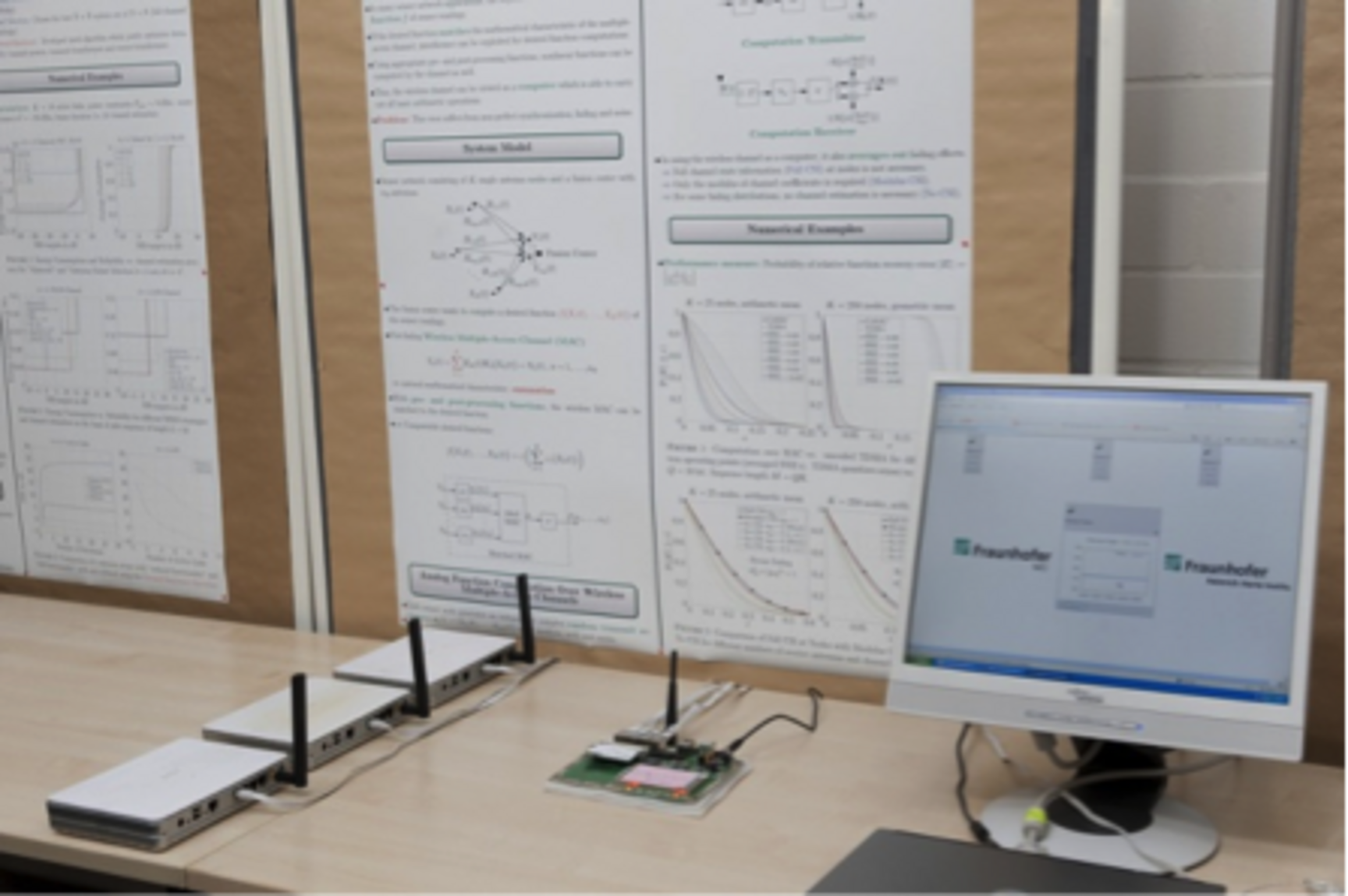Future wireless systems (e.g., sensor networks and wireless communications systems) are expected to be highly heterogeneous, to be composed of a massive number of network elements, and to be truly distributed (i.e., the presence of a central coordinator is not possible). These characteristics, together with the fact that network elements may only exchange information with few local neighbours, will demand a major departure in the way algorithms are implemented and designed. Our research group has proposed fundamental mathematical tools and transmission architectures that can address various tasks in huge wireless systems. Examples of concrete applications where our general mathematical tools have been successfully applied include distributed spectrum sensing, coordinated source localisation in wireless sensor networks, and distributed environmental modelling. To cope with the scarcity of spectrum in applications of this type, our approaches merge the processes of data transmission and computation in wireless systems by exploiting channel collisions induced by a concurrent access of different nodes to a common channel. The advantage of these techniques is the high computation throughput together with low latency, bandwidth requirement, or energy consumption. In collaboration with the TU Berlin (Dr. Andreas Kortke), we have developed a novel physical-layer protocol and implemented it on a proprietary SDR platform. This experimental platform has been used to successfully demonstrate that linear functions can be efficiently evaluated in distributed wireless networks by harnessing interference for computation. The picture below shows the first experimental setup during a presentation at Siemens Corporate Technology, Munich, in February 2009.

Selected publications
- (Book chapter) R. L. G. Cavalcante, S. Stanczak, and I. Yamada, Cooperative Cognitive Radios with Diffusion Networks. IN: Mechanisms and Games for Dynamic Spectrum Allocation, Tansu Alpcan, Holger Boche, Michael Honig, H. Vincent Poor, Eds. Cambridge University Press, UK, 2014
- M. Goldenbaum and S. Stanczak, “On the Channel Estimation Effort for Analog Computation Over Wireless Multiple-Access Channels,” IEEE Wireless Communications Letters, accepted for publication.
- M. Goldenbaum, H. Boche, and S. Stanczak, “Harnessing Interference for Analog Function Computation in Wireless Sensor Networks,” IEEE Transactions on Signal Processing, vol. 61, no. 20, pp. 4893-4906, Oct. 2013.
- M. Goldenbaum and S. Stanczak, “Robust Analog Function Computation via Wireless Multiple-Access Channels,” IEEE Transactions on Communications, vol. 61, no. 9, pp. 3863-3877, Sept. 2013.
- R. L. G. Cavalcante and S. Stanczak, "A distributed sub gradient method for dynamic convex optimisation problems under noisy information exchange,"IEEE Journal of Selected Topics in Signal Processing, vol. 7, no. 2, pp. 243-256, April 2013